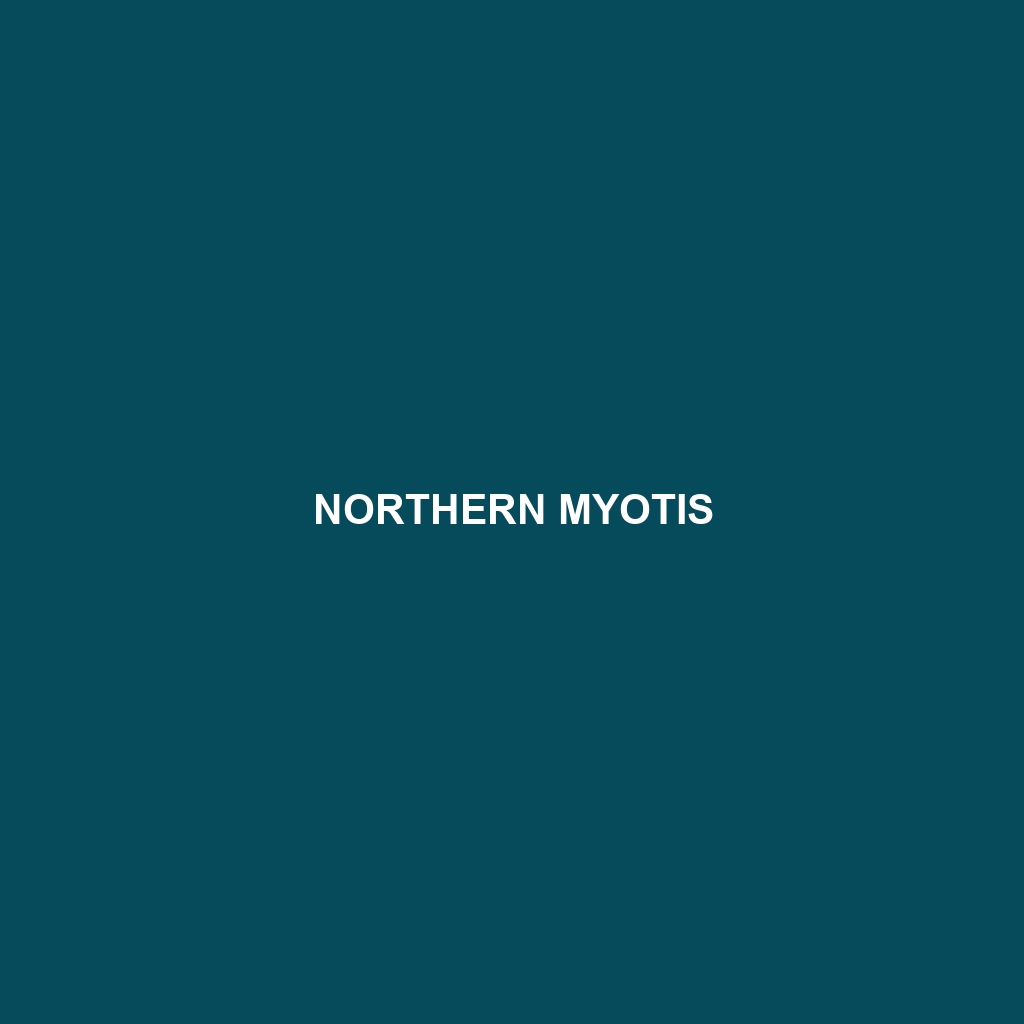Northern Myotis: Species Description
Common Name: Northern Myotis
Scientific Name: Myotis septentrionalis
Habitat
The Northern Myotis is primarily found in the eastern and northern parts of North America, including Canada and the northern United States. This bat species typically inhabits deciduous and mixed forests, as well as wetlands and riparian zones. They prefer areas with abundant roosting sites such as tree cavities, under loose bark, or in human-made structures like buildings and bridges, particularly in proximity to water bodies.
Physical Characteristics
The Northern Myotis is a medium-sized bat, with a wingspan ranging from 25 to 30 cm (9.8 to 11.8 inches). Adults weigh approximately 6 to 10 grams (0.21 to 0.35 ounces). This species has long, narrow wings and a distinctive fur coloration that varies from brown to grayish, with a lighter underside. One of its most identifiable features is the presence of long ears, which can measure up to 4 cm (1.6 inches) long. The Northern Myotis also has a unique glossy appearance to its fur, making it stand out among other bat species.
Behavior
Northern Myotis bats are known for their agile flight and echolocation abilities, which enable them to hunt effectively at dusk and dawn. They primarily forage in open spaces and along forest edges, capturing insects mid-flight. This species exhibits a migratory behavior, often traveling significant distances between summer roosts and winter hibernacula. Northern Myotis is also known for its social structure, as they often roost in small colonies.
Diet
The diet of the Northern Myotis mainly consists of various insects, including moths, beetles, and other flying species. These bats are known to capture their prey using a technique called aerial hawking, where they catch insects in mid-air while flying. Their diet can vary based on the availability of food sources in their habitat, making them vital for the control of insect populations.
Reproduction
The breeding season for Northern Myotis typically occurs in late summer, with females giving birth to a single pup during the following spring. Maternity colonies are formed, where females will care for their young collectively. Pups are unable to fly until they are about three weeks old and rely heavily on their mothers during this crucial period of development.
Conservation Status
As of the latest assessments, the Northern Myotis is classified as endangered due to habitat loss and the impacts of white-nose syndrome, a fungal disease affecting bat populations across North America. Conservation efforts are essential to protect their habitats and establish monitoring programs to ensure their survival.
Interesting Facts
The Northern Myotis is one of the few bat species that can survive in colder climates due to its unique hibernation strategies. Additionally, they are known for their strong sense of smell, which they may use to locate food and navigate their environment.
Role in Ecosystem
This bat species plays a crucial role in the ecosystem as natural pest controllers, helping to maintain insect populations. They contribute to the health of their habitats by assisting in pollination and seed dispersal, further promoting biodiversity. The interactions of Northern Myotis with other species underscore its importance in forest ecosystems.
